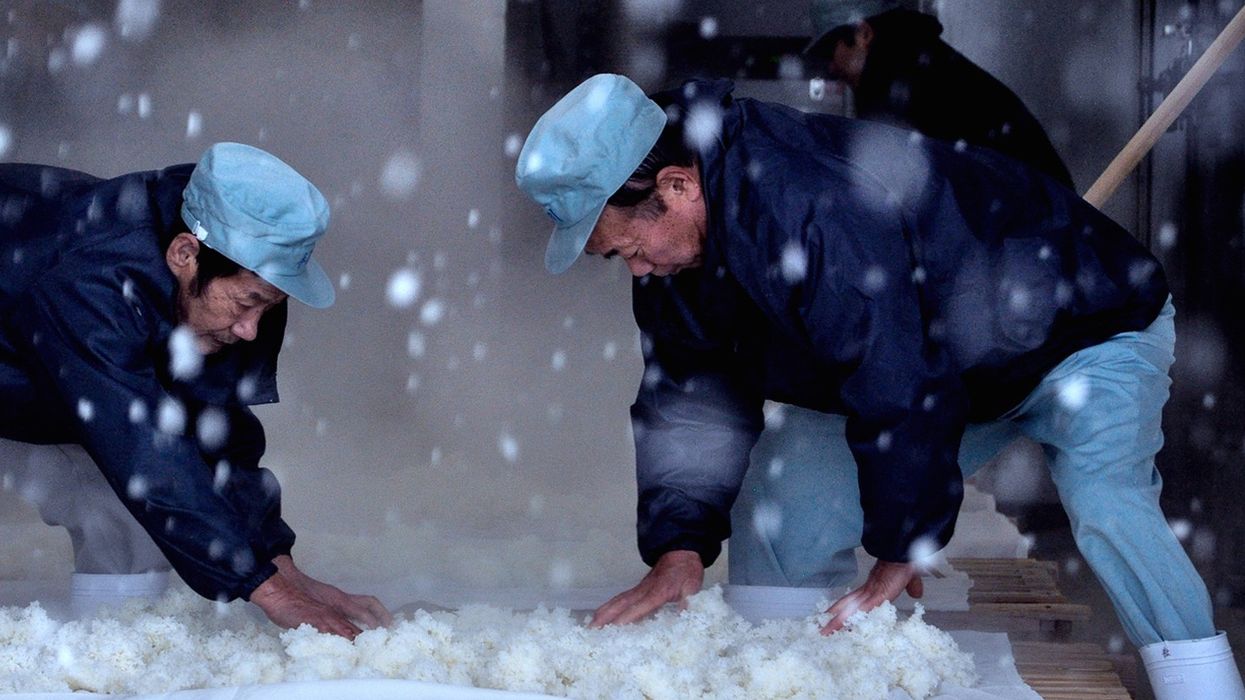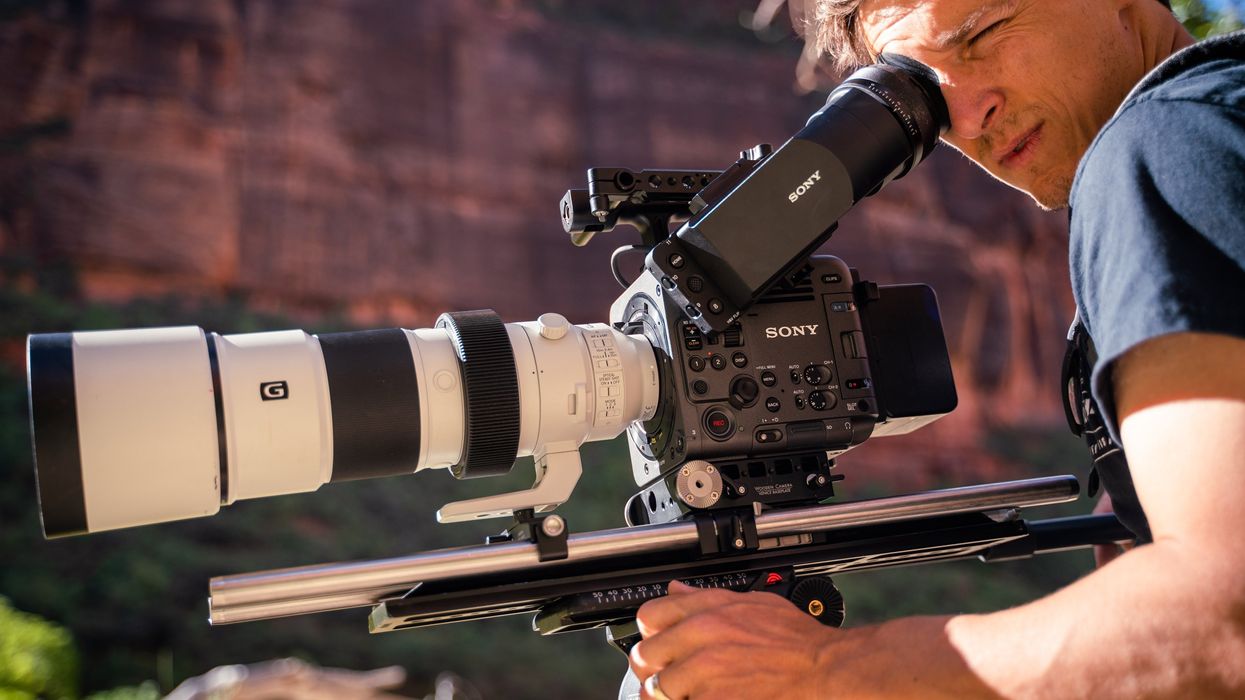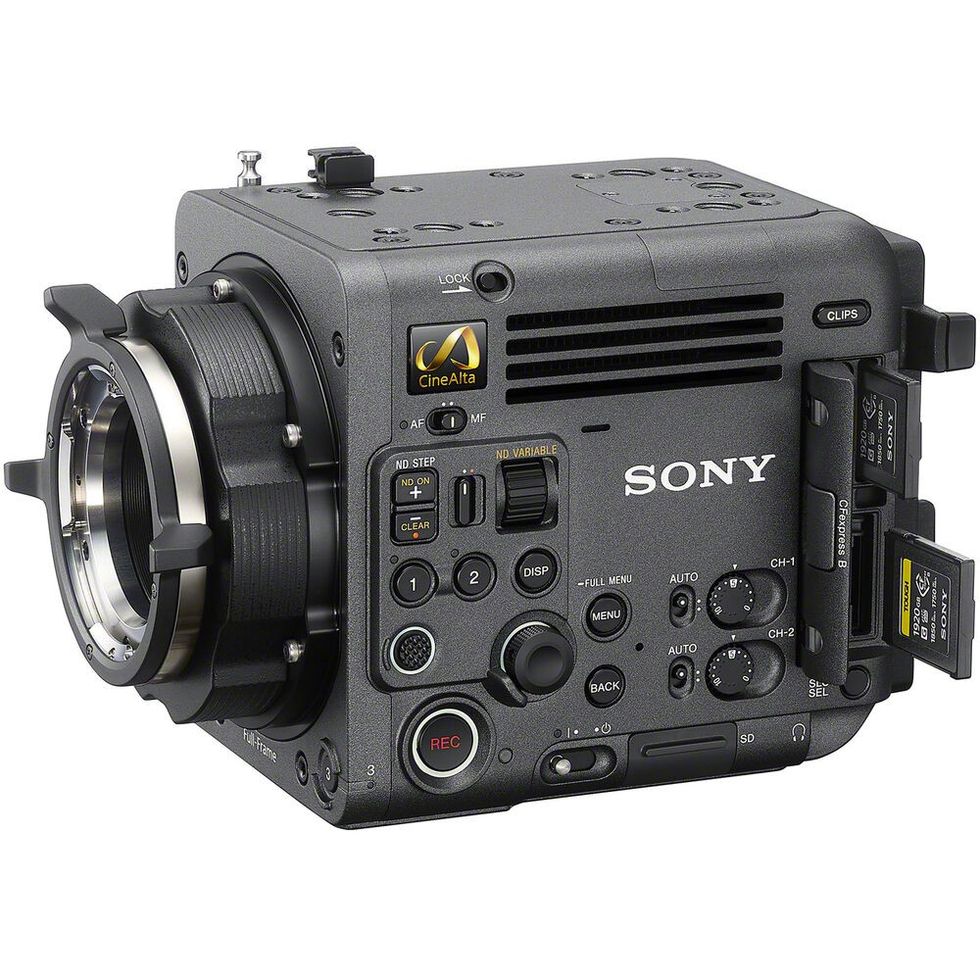'Pretty Images Don't Do Anything': 'The Birth of Saké' Director on Shooting with Your Gut
The Birth of Saké is a gorgeously human look at a venerable tradition.

Erik Shirai and his producer, Masako Tsumura, went all in for the filming of their Tribeca award-winning documentary The Birth of Saké. The pair embedded themselves in the Yoshida Brewery, a 144-year-old company in northern Japan, to document one of the few remaining places that creates saké in the intensive traditional style. The committed saké artisans at Yoshida leave their families and lives behind during the annual brewing seasons, living in the factory and rising daily at 4 AM to get to work. To capture the little-known process, as well as the lives of its practitioners, Shirai and Tsumura did the same.
The popularity of the resulting film, with its subtle, meditative pace and delicate style, may be a surprise, but it successfully hits on two moments in the cultural zeitgeist: documentary visuals are becoming increasingly cinematic, and global audiences care more about where their food comes from.
"If someone is willing to go through the same hard, painstaking things as their subjects are, the subjects will be more willing to be open."
Shirai is based in New York, but No Film School spoke with him on the phone from Japan (where he’s currently shooting another project) prior to the film’s US broadcast premiere on PBS POV. We discussed his history shooting popular TV shows like No Reservations with Anthony Bourdain, his process of complete immersion, and more.
No Film School: Tell us about your process of embedding in the saké factory for months to film.
Erik Shirai: When I make documentaries, I become really big on this component of being there full time. I made another film about these guys that basically sat at Walmart parking lots all night in the winter to work on oil rigs. I literally stayed with them in the same parking lot in my car for weeks at a time to film them. I know from a very personal experience that if someone is willing to go through the same hard, painstaking things as their subjects are, the subjects will be more willing to be open.
It was really important for us when we got access to this brewery to be there full time and to stay there— not just go to a hotel at the end of the night or eat somewhere else. In particular with Japanese people, who tend to be really shy and more reserved. That’s why the film feels very intimate.

NFS: When you set out to tackle the topic, how much of a sense did you already have of what their lives were like and what path the story would take?
Shirai: From the very beginning, it was always going to be a character-based film. I wasn't crazy interested in the saké-making process. I thought it could be informative and maybe eye-catching, but not something that can carry a feature narrative, and so I was always interested in the people.
Going into production— obviously, things change and things don't work out the way you expect them to— but I had a basic idea of what I wanted to showcase and tell. I knew I wanted to film these people at the brewery and how they are and how they build this camaraderie, as well as how their lives are outside of the brewery during the off-season.
"Things that work in your mind don't always work so well on screen."
NFS: Given that you had that plan in mind, what were some surprising aspects of the experience?
Shirai: The biggest challenge that we faced with this particular film was the balance between the brewery and saké technicalities, and the off-season personal take. One, you can’t show everything about the saké-making process because it is too overwhelming and people just don't get it. There's also this sense that you can't go in one direction with the story and then come back to another. Anything that's on screen obviously takes away from something else.
There was this huge balance that we had to fight the whole time, and so we did six test screenings, which I had never done in my other films. It was a very big learning experience for me to get a take on how people interpreted or reacted to certain scenes, and what was confusing. In the edit, things that work in your mind don't always work so well on screen.

NFS: Yeah, sometimes when you’re so ingrained in a process and you know so much about it, you sort of forget what the audience does or doesn't know.
Shirai: I think the biggest lesson I learned in terms of the edit was always to keep in mind what your first impression was when you met these people for the first time. Basically, that's what the viewer watching this film is gonna take out of it. I went back to my notes to remember what that was for me.
NFS: It seems that the sake brewing process is so delicate. How did you shoot so intimately while also maintaining an unobtrusiveness?
Shirai: That's a tricky thing. Because we went back and spent so much time in the brewery, I think there was a little bit more freedom in terms of accessibility. Obviously, the first chunk of filming pushed the limits of what I can do. But as I got to know the brewmaster, and the [company's young, sixth-generation heir] Yasuyuki Yoshida, and all the workers, I slowly was able to film things in a certain way.
I think it’s all about communicating and building the trust between you and your subjects. If you don't have that, it becomes a lot harder; it's an obstacle in terms of what you have access to. With documentaries, there are also just logistical boundaries that you have. I can't really get my camera into certain places, for obvious reasons, but I always try to find a creative solution to it. So if I can't go directly and shoot something, maybe there's another way where I can get a better impression without shooting it so straightforward.
"Especially with documentaries, it’s about being aware, and being intuitive about where you should be when capturing footage."
NFS: Speaking of shooting, what did you shoot with and why?
Shirai: I shot the majority of the film on a Sony F3 and a Sony F5. I think Sonys are pretty decent cameras. I'm not too big a fan of RED cameras. I think for documentaries they don't really make sense.
I always say to people that it doesn't really matter what camera you shoot with. It’s really who's shooting, or how you shoot it and what's behind the camera. I think people nowadays really depend on the technical aspect of filmmaking, but it’s really about telling a story. Especially with documentaries, it’s about being aware, and being intuitive about where you should be when capturing footage. I think a lot of people just go out and shoot pretty images. I try to be very conscious of what I'm shooting, in terms of how it will reflect on a narrative.

NFS: That being said, your film has a very unique visual language. How was that developed?
Shirai: Well I came from a little bit different background, in terms of my creative process. I didn't go to film school; I learned everything on my own and on set.
"Saké itself is very subtle. I felt like the film should reflect that."
NFS: No film school!
Shirai: [Laughs] There’s a little promotion for you there.
A lot of my influence has come from my paintings and photography, so the way that I frame comes out a little bit more of an abstract perspective. I've rarely ever looked at things very literally.
When I created the palette for this, I was influenced by what was in front of me. I felt like it should be sort of subtle. Saké itself is very subtle. It shouldn't be this overwhelming thing in your palette when you're having a meal; it should play a supporting role. I felt like the film should reflect that.
Visually at least, I didn't want to oversaturate anything. Everything was placed more on a muted palette. In terms of color tone, I always go back to my Japanese aesthetics. It leans more towards the cool end—blue and greens—rather than sort of the reds and high-contrasting colors.
"A feature film needs to feel like one person shot it."
NFS: I’m surprised to hear of your arts background, because I know that you've shot for television, which feels completely opposite to the process that you are talking about here. What are some of the ways that shooting a feature differed for you from shooting TV?
Shirai: For me, television seems very much “on the surface” and people consume TV on a daily basis. It's not going to make you feel something so deep and I feel like film needs to go a little deeper, and especially documentaries need to go a lot deeper. You can't just sort of puddle around on the surface.
So when you shoot it, you need to be more considerate about having an aesthetic that's very consistent. In TV, it's sort of all over the place; you have many different aesthetics, many different camera operators, many different styles poured into one pot. Whereas a feature film needs to feel like one person shot it and the aesthetic is very clear. The viewer is going to feel like they are watching five different stories, or five different episodes put in one. I really wanted to make it clear that my film wasn't that.

NFS: Music also played a big role in my experience with the film. Can you tell me about the process of creating the soundtrack and working with your composer, Ken Kaizu?
Shirai: Music and sound are such a big thing to me. I'm very sensitive to it and I feel like so many movies these days almost force the viewer to feel something based on the music. Again, going back to what this film is about and what is: it’s supposed to be subtle. I believe that music should give an impression of a feeling, but shouldn't be driven down your throat.
"I believe that music should give an impression of a feeling, but shouldn't be driven down your throat."
For this specific piece, it was really important to me that the composer has an understanding of the Japanese minimal aesthetic. I wanted to make sure the soundtrack came from the Japanese perspective, and didn’t feel like it was being exoticized or sensationalized from a western point of view. This being my first feature film, and me being Japanese, I really wanted to make a tribute to Japanese culture and my own people.
So we went very much out of our way to work with a Japanese music composer, a good friend of mine. The only problem is that he was based in Japan and we were in New York, so it was a very tricky thing. A big majority of the going back and forth happened on Skype at weird hours in the middle of the night.
NFS: Is there anything you'd like to say to other filmmakers directly?
Shirai: The only thing that I can say to anybody that is going out and making films, especially when it comes to shooting, is that you should really use your instincts to film. Too many people rely on technicalities and looking at what looks pretty. I shoot as much as possible based on my own feelings and my own intuitions because I think in the general big scheme of things, that gets interpreted better. Pretty images, after a while, don't do anything. You get numb to them. But when you’re able to shoot with your gut, people react better.
The Birth of Sake has its US broadcast premiere on the POV documentary series on PBS on Monday, Sept. 5, 2016 at 10 PM. (Check local listings.)













